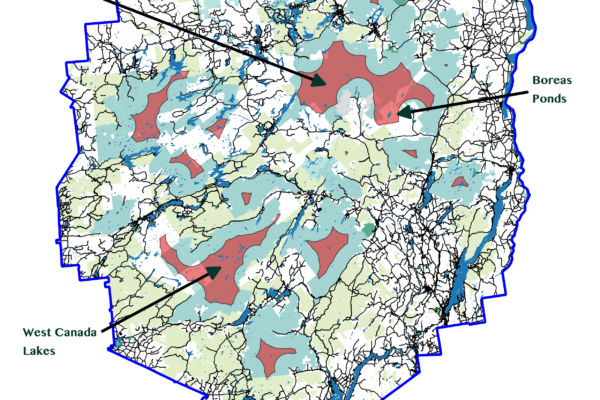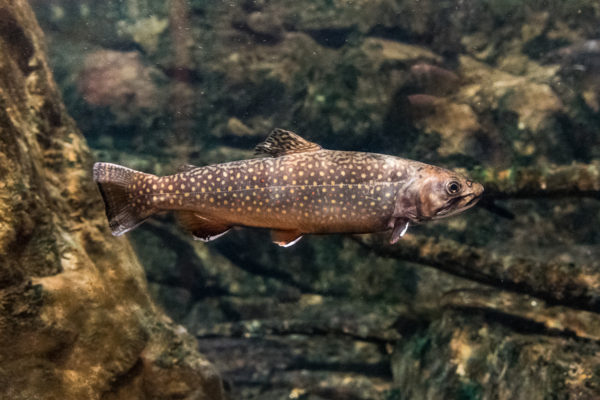FOR IMMEDIATE RELEASE, Tuesday, October 11, 2016
SARANAC LAKE, N.Y. – Adirondack Wilderness Advocates (AWA) today called for the rejection of the 2016 Draft Supplemental Environmental Impact Statement (DSEIS) just released by the New York State Adirondack Park Agency, which includes three alternatives for management of the recently purchased Boreas Ponds Tract. AWA’s call for rejection is based upon three primary considerations: the DSEIS fails to consider all plausible alternatives for the management of the Boreas Ponds Tract; it fails to fully analyze and properly compare the environmental impact of its three alternatives; and it opens the door to motorized access to the Ponds.
“Any of these issues taken alone would be enough to reject this version of the DSEIS,” said Brendan Wiltse, AWA co-founder. “Taken together they show the document is grossly inadequate.”
“To limit their thinking to only three similar alternatives for the most significant addition to the Forest Preserve in a century is unacceptable,” said Pete Nelson, co-founder of AWA along with Wiltse and Bill Ingersoll. “The citizens of New York deserve better than that.”
AWA speculates that the existence of an easement granting access to Gulf Brook Road by the Towns of North Hudson and Newcomb, which was put in place just before the sale of the tract to the State, may be the primary reason for the limited alternatives contained in the DSEIS.
“It’s outrageous that so many of the decisions regarding the management of this tract were taken off the table prior to the acquisition, in private discussions between The Nature Conservancy (TNC), the two towns, and the State Department of Environmental Conservation (DEC),” said Ingersoll. “None of the encumbrances existed prior to TNC’s acquisition of the property from Finch Pruyn a decade ago; all were manufactured by the sale of the easement rights just a few weeks before the sale of the land to the state. There was no public participation in the process, despite the public impact, and the deal was structured in an attempt to prevent a Wilderness designation over much of the property.”
Still, the presence of the easement does not preclude the Wilderness protection that the Boreas Tract deserves. The rights of the towns to access the property as defined by the easement agreement are subject to an annual permit from DEC, as well as the authority of other agencies. DEC has the right to refuse the permit, and the APA has the authority to preclude the permit by designating the road as Wilderness. “A DSEIS that fails to consider all of the possible options is deficient and unacceptable,” said Ingersoll.
Measured as an Environmental Impact Statement the document also falls well short. “It is clear that the protection of the resource is not being considered,” said Wiltse, who has a Ph.D. in biology. “There appears to have been very little field work, almost all of which focused on wetland plant identification. In terms of the Ponds, the entire analysis relies on a single site visit by NYS DEC in 2013. Mammal populations aren’t mentioned even though it is well known that there is a Moose population, which is a protected species in NYS, on this tract. Overall, the environmental impact statement fails to adequately document the biological characteristics of the Boreas Ponds tract. Therefore, the document doesn’t contain the basic information necessary to assess the impact of the three alternative classification proposals. At a minimum we should expect a report as detailed as the one issued by the Wildlife Conservation Society, Ecological Composition and Condition of the Boreas Ponds Tract.”
Added Wiltse, “The intangible characteristics of the tract are summarized in only two paragraphs. I would expect APA to mention the relationship between this tract of land and adjacent lands, quantify the potential for remoteness, and address other intangible characteristics such as vistas. The report, Boreas Ponds: Scientific assessment of physical, biological and intangible characteristics, by Adirondack Research, LLC is a good example of the minimum we should expect from APA.”
As written, all three alternatives proposed in the DSEIS potentially allow motorized access all the way to the Boreas Ponds, in direct contradiction to a Wilderness classification that would be the only guarantee of protection from overuse, invasive species and the loss of remoteness and solitude.
“Boreas is one of the few tracts left in the Northeast that would be more than three miles from a road, but only if Gulf Brook Road is closed to motorized traffic,” said Nelson. “True remote Wilderness is a precious asset and a draw to thousands of hikers that seek it to the point of overuse elsewhere in the High Peaks. It’s myopic to ignore how rare this opportunity is.”
The DSEIS also improperly assumes the need to maintain existing dams at Boreas and the LaBier Flow. “The three current alternatives assume an unjustified preference for maintaining these dams indefinitely,” said Ingersoll, “and grants the two towns an unwarranted role in the management of these lands. None of the alternatives ensure the preservation of the intangible considerations prioritized by the SLMP, including the sense of remoteness of places far from motorized access. The management of dams and roads in the Forest Preserve may be an incidental necessity, but it is never the primary goal.”
With an APA meeting this week and Public hearings on the Boreas Tract scheduled shortly thereafter, time is of the essence. AWA calls for an immediate rejection of this DSEIS and the production of a new draft that includes a reasonable and thorough set of alternatives that better reflects both the science and the aesthetics that make the Boreas Ponds Tract the best and most appropriate candidate for uncompromised Wilderness protection in decades.
For more information, please contact Adirondack Wilderness Advocates at contact@adirondackwilderness.org.



